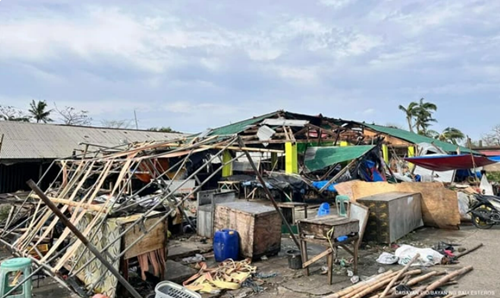November 08, 2024 | 21:20 (GMT+7)
Philippines cleans up after typhoon Yinxing
Philippine authorities reported on November 8 that they are clearing away fallen trees and debris after typhoon Yinxing made landfall in the Northern coastal region on November 7.
The Philippine Atmospheric, Geophysical and Astronomical Services Administration (PAGASA) said that Yinxing, packing winds of up to 175km/h, had damaged power lines, uprooted trees, and shattered windows in many buildings, forcing thousands to seek shelter. Fortunately, there were no reported casualties.
    |
 |
|
Philippine people cleans up after typhoon Yinxing. |
As of 8:00 a.m. on November 8, the eye of typhoon Yinxing was located Northwest of Laoag city and was moving into the East Sea (South China Sea).
Yinxing is the third storm in less than a month to threaten the country, following severe tropical storm Trami and super typhoon Kong-rey, which killed at least 158 people.
The Philippines is hit by an average of 20 typhoons and tropical storms each year, causing damage to homes and infrastructure and posing a significant threat to human life.
According to a recent study, storms in the Asia-Pacific region are forming closer to coastlines, intensifying more rapidly, and spending longer over land due to climate change.
Source: VNA